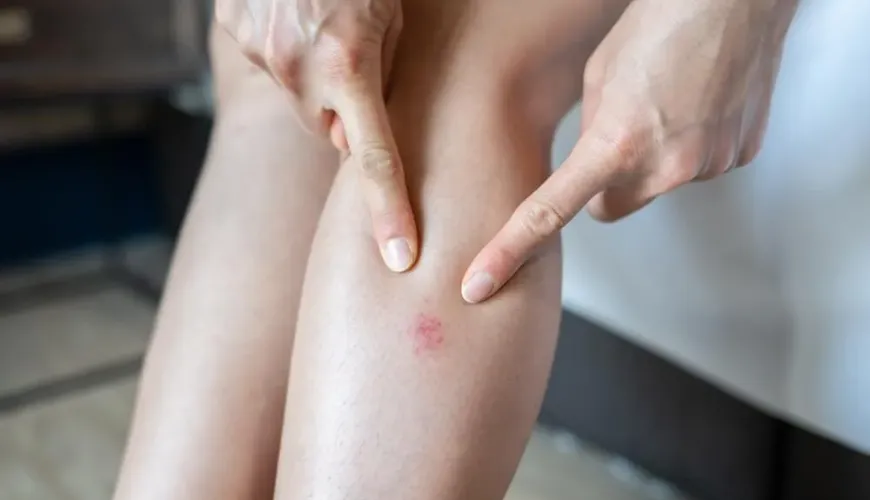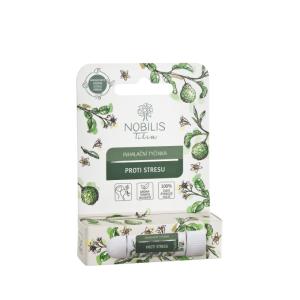
How to distinguish red spots on the skin from an allergic reaction?

What Do Red Spots on the Skin Signal and How to Treat Them?
Our skin is the largest organ of the human body, playing a crucial role not only in protecting against external influences but also in how our body responds to internal changes. Any changes on the skin's surface, including red spots, can be early signs of health issues. While some spots may disappear on their own, others may require medical attention. This article focuses on the various causes of red spots on the skin, from common allergies to more serious skin conditions, and how to handle them.
What Does a Red Spot on the Skin Mean?
Red spots on the skin are a common manifestation that can signal various health problems. These spots can appear on any part of the body—from legs, through arms, to the torso. Spots can vary in size and shape, may itch, peel, or feel warm to the touch. Upon first noticing, for example, a red spot on the leg, there may be no need to panic, but it's important to monitor other symptoms, such as itching or spreading of the spots across the body.
Red Spots on the Legs
Dry red spots on the legs are a common issue that can have various causes. They often appear due to skin irritation, dryness, or reaction to allergens, such as certain types of fabrics in clothing or chemicals used in cosmetic products. Red spots on the legs may be accompanied by dry skin that feels rough and tight, causing itching. If the spots increase in size or more appear, it could be a sign of a more serious problem, such as eczema.
Allergic Reactions and Their Manifestations
Allergic reactions on the skin are among the most common causes of red spots on the skin. Allergies can be caused by various factors, including foods, pollen, dust, or chemicals in cosmetics or detergents. A typical manifestation of an allergy is itchy red bumps on the legs, arms, or other parts of the body. During an allergic reaction, the spots are often swollen, reddened, and can cause significant discomfort.
If you suspect that red spots on your skin are related to an allergy, it's important to evaluate what you've recently eaten, what cosmetics you've used, or whether you've been in contact with new substances. Identifying the allergen is the first step to successfully resolving the problem. In some cases, it may be necessary to visit a doctor who will conduct allergy tests and recommend appropriate treatment.
Symptom of Eczema or Dermatitis?
In addition to allergies, itchy red spots on the skin can signal eczema or atopic dermatitis. Eczema is a chronic skin condition that primarily affects people with sensitive skin. Symptoms include dry red spots on the legs, arms, or other parts of the body that are very itchy. Eczema often worsens in winter months when the air is drier or during increased stress. Itching in eczema is very intense, and if you scratch the affected area, it can lead to further skin irritation or even infection.
Try our natural products
Dermatitis is another condition that causes red spots on the skin. Like eczema, it can be triggered by contact with irritants such as chemicals or perfumes. When itchy red spots appear, it's important to avoid further irritation and use only gentle cosmetics and moisturizing products.
Large Red Spots on the Body
If you notice large red spots on your body, it's important to evaluate their appearance and other symptoms. Such spots can be defined and distinctly red, which may signal a more serious condition, such as autoimmune diseases or drug reactions. Defined spots on the skin often appear suddenly and can spread quickly, which should signal an immediate consultation with a dermatologist.
Some autoimmune diseases, such as lupus, are manifested by large red spots on the skin, which may be accompanied by other symptoms such as joint pain, fatigue, or fever. If you suspect a more serious illness, it's important to seek professional medical help as soon as possible.
Red Spots on the Hands
The hands are constantly exposed to various irritants, so it's not uncommon for red spots to appear on them. Red spots on the hands can be caused by allergies, contact dermatitis, or eczema. Often accompanied by itching, dryness, and cracking of the skin. If the spots result from an allergic reaction, it's important to avoid further contact with the allergen and choose gentle hygiene products.
Prevention and Skin Care
Preventing red spots on the skin involves primarily proper skin care. Use moisturizing creams and emollients that help keep the skin supple and hydrated. If you suffer from eczema or atopic dermatitis, avoid irritants and use special cosmetics designed for sensitive skin. Adequate hygiene is also important, but avoid excessive use of soaps that can dry out the skin.
If you suspect an allergic reaction, it's advisable to keep a record of what you've eaten or what cosmetics you've used, so you can identify potential allergens. In case of persistent problems, do not hesitate to visit a dermatologist who will conduct a detailed examination and recommend appropriate treatment.
Red spots on the skin can have many different causes, from red bumps on the legs caused by allergies, through eczema, to serious autoimmune diseases. The key to successful treatment is correct diagnosis and timely intervention. Be sure to pay attention to any unusual manifestation on your skin and seek professional help if uncertain.


